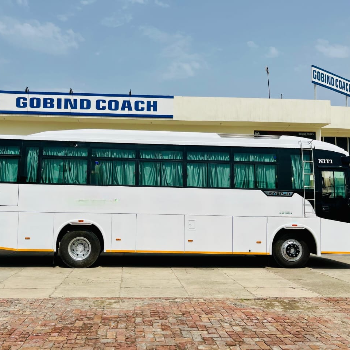In the bustling city of Chennai, where the aroma of filter coffee mingles with the salty breeze from the Bay of Bengal, lives Arjun, a young teacher with a dream. Every weekend, Arjun embarks on a journey from Chennai to Coimbatore, a trip that is not just a commute but a vital link to his family and cultural roots. Like many young professionals in India, Arjun is budget-conscious, constantly balancing the scales between saving money and staying connected with loved ones.
Arjun represents a growing segment of Indian travelers who prioritize affordability without compromising on comfort. According to a recent survey by the Indian Institute of Management, nearly 60% of domestic travelers in India fall within the budget-conscious category. For these travelers, the challenge is finding a mode of transportation that aligns with their financial constraints while still providing a comfortable journey.
Enter non-AC buses, a practical solution that bridges the gap between cost and comfort. These buses offer a reliable and affordable travel experience, making them a popular choice for millions of Indians like Arjun. But what makes non-AC buses so appealing, and how do they specifically cater to the needs of budget-savvy travelers?
The answer lies in the unique blend of practicality and emotional comfort that non-AC buses provide. On a practical level, non-AC buses are significantly more economical than their air-conditioned counterparts. This affordability allows travelers to allocate their budget to other essentials, such as family obligations or personal savings. For Arjun, this means more frequent trips home without straining his wallet.
Moreover, non-AC buses often have extensive networks, connecting even the most remote areas of India. This accessibility ensures that travelers can reach their destinations without the hassle of multiple transfers or expensive last-mile connectivity options. For instance, Arjun appreciates the convenience of a direct route from Chennai to Coimbatore, a journey made seamless by the availability of non-AC buses.
On an emotional level, non-AC buses offer a sense of community and cultural connection. The experience of traveling with fellow passengers, sharing stories and snacks, creates a rich tapestry of human connection that is often missing in more isolated modes of travel. For Arjun, these journeys are not just about reaching a destination; they are an opportunity to engage with the vibrant diversity of India, from the striking landscapes to the colorful personalities he encounters along the way.
Consider the case of Meera, a small business owner from Hyderabad, who frequently travels to nearby towns to source fabrics for her boutique. For Meera, non-AC buses are a lifeline, enabling her to maintain her business connections without incurring high travel costs. The affordability of non-AC buses allows her to invest more in her business while still enjoying the journey, often using travel time to brainstorm new ideas or connect with other entrepreneurs.
The impact of non-AC buses extends beyond individual travelers. They play a crucial role in supporting the broader economy by facilitating the flow of goods and people across regions. This connectivity is vital for businesses, especially in rural areas, contributing to economic growth and development.
In conclusion, non-AC buses offer a practical and emotionally resonant solution for budget-conscious travelers in India. By providing an affordable and comfortable travel experience, they empower individuals like Arjun and Meera to stay connected with their families, pursue their dreams, and contribute to their communities. As more Indians seek cost-effective travel options, the role of non-AC buses in shaping the journey of millions becomes increasingly significant. So, the next time you find yourself planning a trip, consider the humble non-AC bus—a gateway to adventure, connection, and affordability.
Visit Vyaparify Site:
https://id.vyaparify.com/lekesh-travelsLocation:
https://maps.app.goo.gl/DhPrinDL5EN7e5c57 
